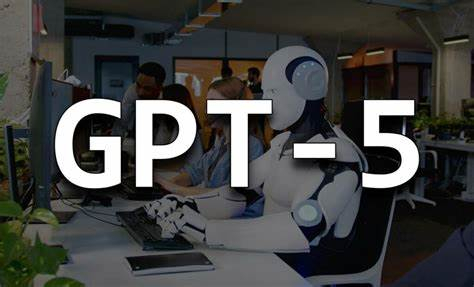GPT-5, the next-generation AI model from OpenAI, has been highly anticipated by users since the successful launch of GPT-4 just over two months ago. GPT-4 has impressed users with its capabilities, and now they are eagerly awaiting GPT-5's release. Initially, there were rumors that GPT-5 would be released by the end of 2023. However, OpenAI's CEO Sam Altman clarified that the training for GPT-5 has not begun yet and will take some time. Instead, there might be an intermediate update, GPT-4.5, expected around October 2023, with improved capabilities, including the ability to analyze images and text together.

OpenAI is currently focused on refining GPT-4 and addressing some challenges, such as high inference time and limited API access. They have also introduced new features like ChatGPT plugins and Code Interpreter, which are still in beta testing. The internet browsing capability in GPT-4 was removed due to content display issues.To ensure a sustainable and efficient model, OpenAI understands the importance of compute efficiency. Therefore, GPT-5 is likely to be released in 2024, coinciding with Google Gemini's launch, assuming no regulatory obstacles.
One of the significant goals for GPT-5 is to reduce hallucination, which refers to inaccurate responses by AI models. GPT-4 made good progress in this area, becoming 82% less likely to respond inaccurately compared to its predecessor. OpenAI aims to further enhance GPT-5 and make it even more trustworthy by reducing hallucination to less than 10%. Users are eager to see how GPT-5 will surpass its predecessors and offer improved efficiency, accuracy, and reduced hallucination. The potential release of GPT-4.5 also adds to the excitement for what's to come in the AI world. As we wait for these advancements, it's clear that OpenAI is committed to delivering powerful and reliable AI models in the near future.
With the introduction of GPT-5, OpenAI has the potential to achieve a significant breakthrough by making it genuinely multimodal. This new model could handle text, audio, images, videos, depth data, and even temperature information. It would have the capability to integrate data streams from various modalities, creating a cohesive embedding space for a more comprehensive understanding of information.
Although there are many guesses and expectations but following the launch of GPT-4, OpenAI has adopted a more secretive approach, keeping vital information about its operations hidden from the open-source community. Unlike its earlier days as a nonprofit organization driven by principles of free collaboration, OpenAI no longer shares research on the training dataset, architecture, hardware, training compute, and training method. This shift to a more closed stance is intriguing, considering its initial commitment to transparency and openness. Additionally, OpenAI's transformation into a capped-profit entity adds to the changes observed in the company's philosophy and practices.









